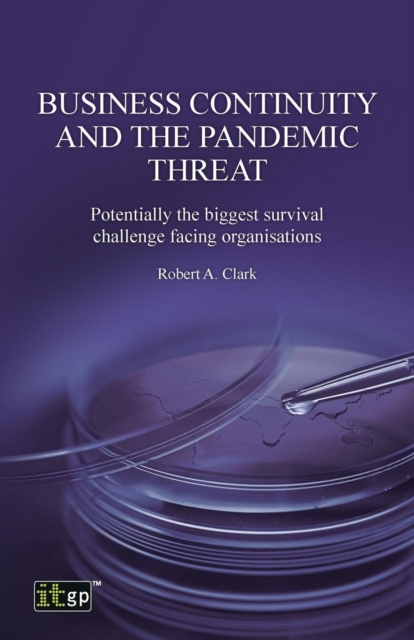Considering the pandemic threat in a business continuity context I thoroughly enjoyed reading Clark's book which is written in a style that makes it easy for anyone to understand without requiring a background in medicine or business. I have been involved in disaster management planning for the past ten years and yet I still found this book both enlightening and extremely informative. Dr Tanya Melillo MD, MSc(Dist), PhD This informative book is written in an easy going and conversational manner, but the message it brings to the table is critical to understanding the meaning of any forthcoming pandemic threat and considerations of how to mitigate the effects, where possible, to you and your organisation Owen Gregory MSc BA (Hons) MBCI MBCS The increase in commercial aviation and international travel means that pandemics now spread faster than ever before. Seasonal flu pandemics, zoonotic contagions such as Ebola, swine flu and avian flu (e.g. H5N1 and H7N9), and respiratory syndromes such as SARS and MERS have affected millions worldwide. Add the ever-present threat of terrorism and biological warfare, and the possibility of large proportions of your workforce being incapacitated is a lot stronger than you might think. You may well have prepared for limited business interruptions, but how would your business fare if 50% or more of your employees, including those you rely on to execute your business continuity plan, were afflicted by illness - or worse? Although nothing can be done to prevent pandemics, their impact can be significantly mitigated. Business Continuity and the Pandemic Threat explains how. Product overview The book is divided into two parts, which examine the pandemic threat and explain how businesses can address it: Part I: Understanding the Threat The first, shorter, part provides the reader with a detailed overview of the challenge that pandemic threats can present. It uses historical examples (such as the 1918-19 Spanish Flu outbreak, which killed 50 million) to illustrate how pandemics can have devastating effects not only on the global population but also on critical infrastructure, the global economy and society. Part II: Preparing for the Inevitable The second part of the book considers the actions that can be taken at a global, national, corporate and individual level to mitigate the risk and limit the damage of pandemic incidents. It provides guidance on creating and validating a pandemic plan, and explains how it integrates with a business continuity plan. Comprehensive case studies are provided throughout. Topics covered include: The World Health Organisation (WHO)'s pandemic phases and the Centre for Disease Control (CDC)'s Pandemic Severity Index Preventive control measures Crisis management and the composition of a crisis management team Dealing with cash-flow, staff absenteeism, home working and supply chain management Communications and media plans Pandemic issues for HR The threat to critical national infrastructure Health service contingency plans and first responders' business continuity plans The provision of vaccines and antiviral medicines, including relevant ethical issues Take your business continuity plan to the next level: ensure your organisation survives a pandemic with a substantially depleted workforce. Buy Business Continuity and the Pandemic Threat today. About the author A Fellow of the Institute of Business Continuity Management and Member of the Business Continuity Institute, Robert A. Clark is also a Fellow of the British Computer Society and a Member of the Security Institute. His career includes 15 years with IBM and 11 years with Fujitsu Services working with clients on BCM related assignments. He is now a freelance business continuity consultant at
www.bcm-consultancy.com.
Aceasta este o carte in limba engleza. Descrierea cartii (tradusa din engleza cu Google Translate) este in limba romana din motive legale.
Avand in vedere amenintarea pandemica intr-un context de continuitate a afacerii, mi-a placut foarte mult sa citesc cartea lui Clark, care este scrisa intr-un stil care face mai usor de inteles oricine, fara a avea nevoie de o experienta in medicina sau afaceri. Am fost implicat in planificarea gestionarii dezastrelor in ultimii zece ani si, totusi, am gasit aceasta carte atat iluminanta, cat si extrem de informativa.

